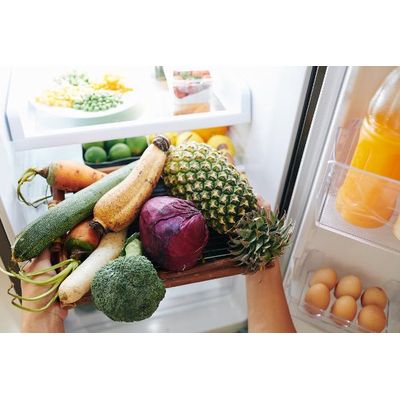

- Home
- Companies
- PostHarvest Technologies
- Training
- PostHarvest - Storing Fruits & ...

PostHarvest - Storing Fruits & Vegetables Course for Optimal Shelf-Life (General)
The flavour of fruits and vegetables is influenced by maturity and quality at harvest and by how they are stored afterwards. To maintain the freshness and flavour of the produce you buy at the market or grow in your garden, you should know how to store it at home. Many fruits and vegetables should be stored only at room temperature because refrigerator temperatures (usually 3.3° to 5.6°C [38° to 42°F]) damage them or prevent them from ripening to good flavour and texture. For example, when stored in the refrigerator, bananas develop black skin and do not gain good sweetness, and sweet potatoes take on off-flavours and a hardcore when cooked after being refrigerated.
Watermelons lose their flavour and deep red colour if they are stored for longer than 3 days in the refrigerator. Pink tomatoes ripen to a better taste and red colour if they are left at room temperature. They do not turn red in the refrigerator, and even red tomatoes kept in the refrigerator lose their flavour.
Countertop Storage
The counter storage area should be away from direct sunlight to prevent produce from becoming too warm. Fruits and vegetables that are recommended to be stored on the counter can be kept for a few days. Even so, moisture loss can be reduced by placing produce in a vented plastic bowl or a perforated plastic bag. Do not place produce in sealed plastic bags on the counter because this slows ripening and may increase off-odours and decay due to accumulation of carbon dioxide and depletion of oxygen inside the sealed bag.
Ripening in a bowl or paper bag can be enhanced by placing one ripe apple with every 5 to 7 pieces of fruit to be ripened. Apples produce ethylene that speeds ripening. (Fuji and Granny Smith do not produce much ethylene and do not enhance ripening.)
Refrigerator Storage
Refrigerated fruits and vegetables should be kept in perforated plastic bags in the produce drawers of the refrigerator. You can either purchase perforated plastic bags or make small holes with a sharp object in unperforated bags (about 20 pin holes per medium-size bag). Separate fruits from vegetables (use one drawer for each group) to minimise the detrimental effects of ethylene produced by the fruits on the vegetables. Use all refrigerated fruits and vegetables within a few days since longer storage results in loss of freshness and flavour.
